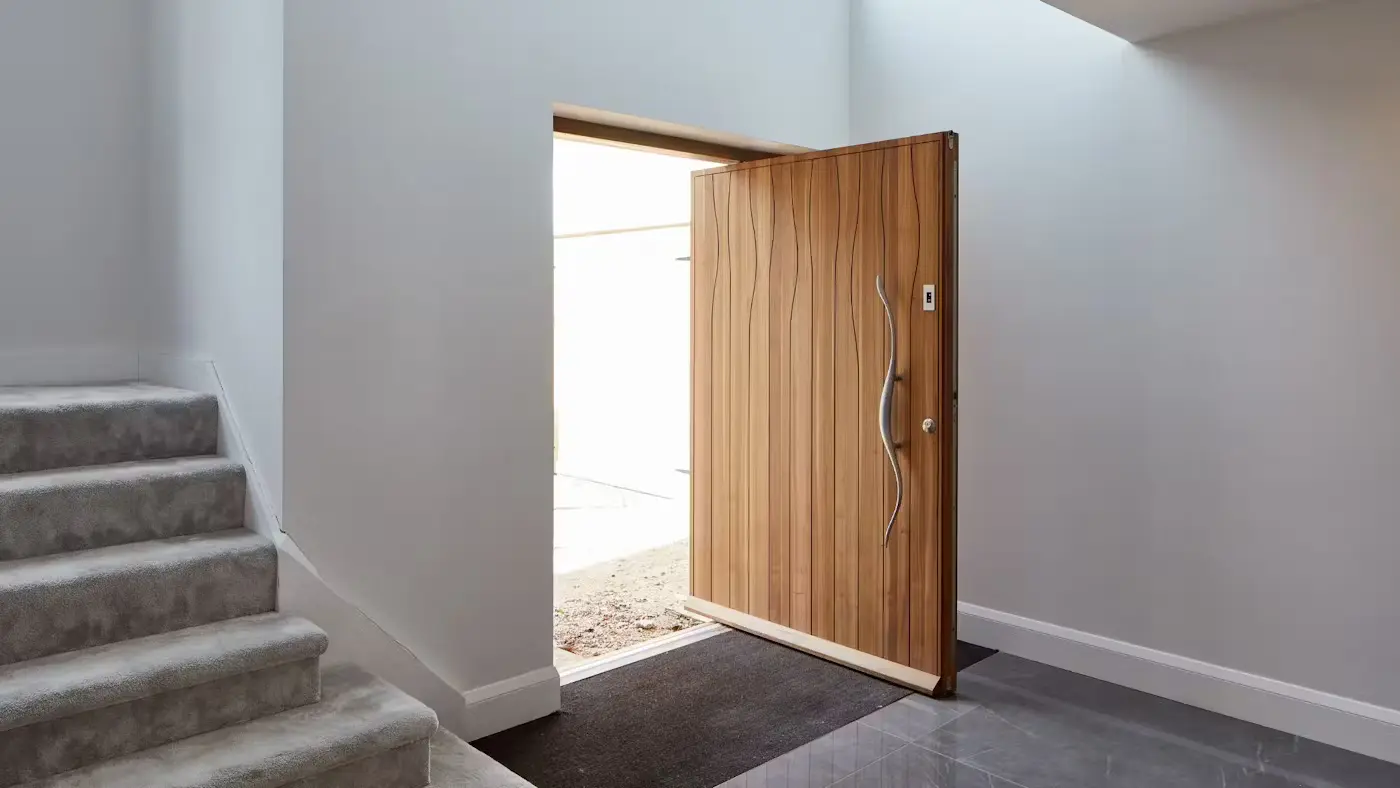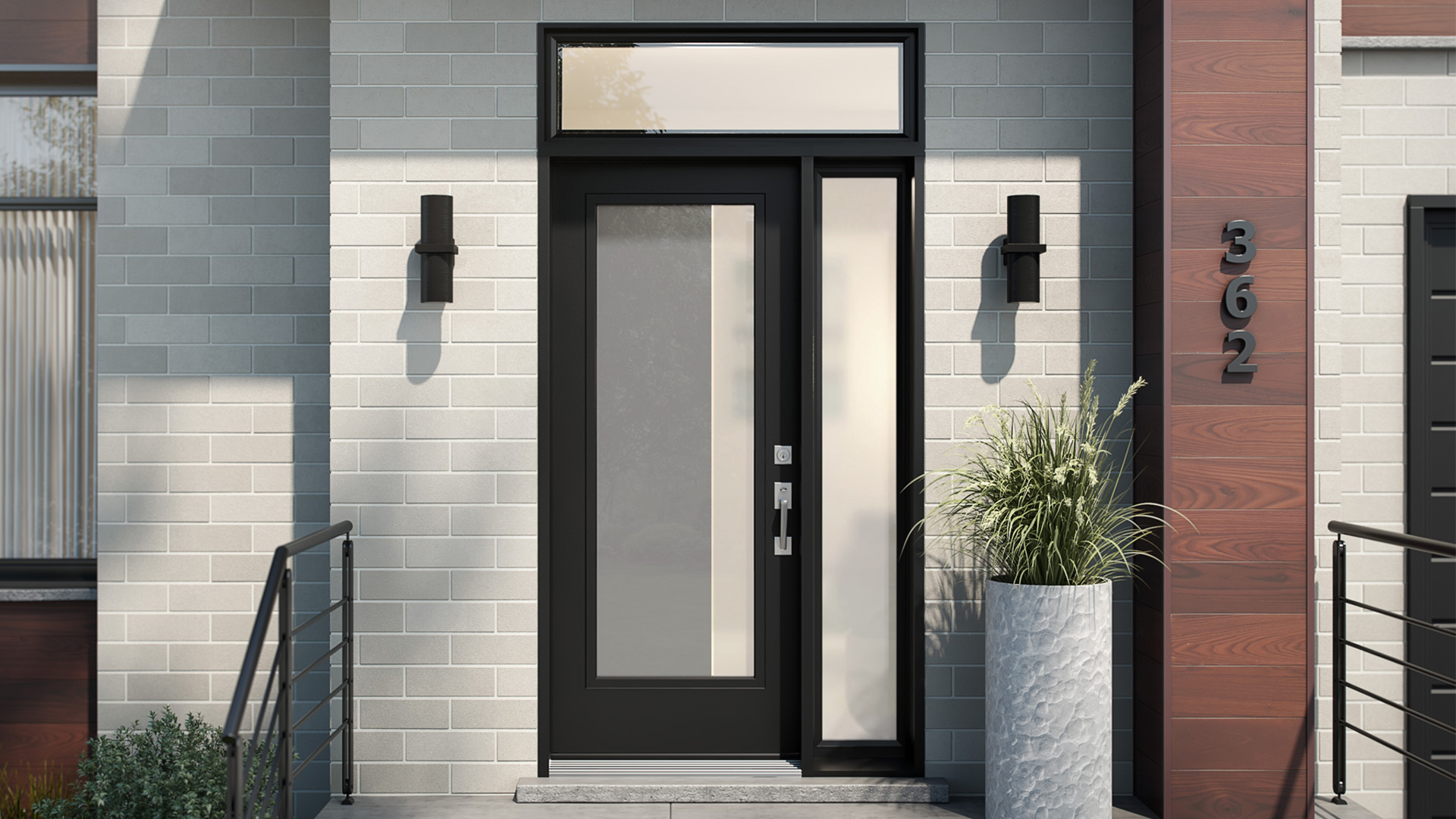What type of wood is best for a front door?
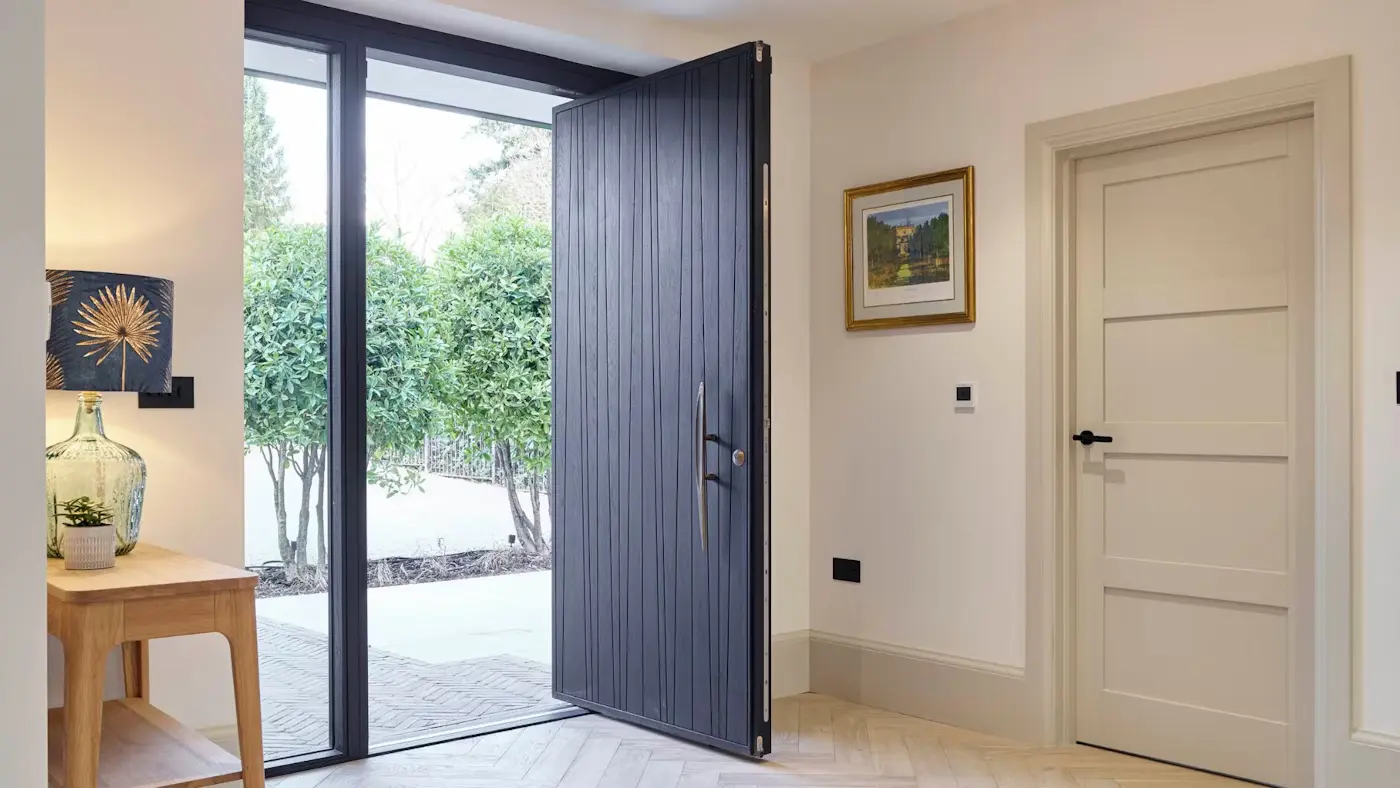
Introduction to Choosing the Best Wood for Your Front Door
Choosing the right wood for your front door is a big decision. After all, your front door isn’t just an entryway – it’s the first impression your home makes on visitors. Whether you’re building a new home or replacing an old front door, selecting the right type of wood can completely transform the look and feel of your entrance.
Why Wood is a Popular Choice for Front Doors?
Wood has been a go-to material for front doors for centuries, and it’s easy to see why. First, wood offers a natural charm that no other material quite matches. It has a warmth and authenticity that can’t be replicated by metal or fiberglass. Whether looking for a classic or contemporary look, wood can be easily tailored to fit your home’s aesthetic.
Another reason why wood is such a popular choice for front doors is its durability. With the right care, a wooden front door can last for decades, standing strong against the elements. It offers excellent insulation, keeping your home warm in the winter and cool in the summer. Many homeowners also prefer wood because of its ability to be customized. You can choose from various stains, finishes, and designs to create a door that reflects your style.
The Role of Wood in Curb Appeal
When approaching your home, your front door is one of the first things people notice. It’s a key element of curb appeal, and the material you choose plays a significant role in creating a welcoming, inviting atmosphere. Wood’s rich textures and natural tones add character to your home.
A wooden front door can dramatically boost your home’s visual appeal. Whether it’s a traditional oak door, a sleek mahogany design, or a rustic pine entryway, wood instantly elevates the overall aesthetic. It provides a timeless look that’s hard to achieve with other materials. Plus, it complements various architectural styles, from colonial to modern, enhancing your home’s design.
A high-quality wooden front door is a smart investment if you want to increase your home’s value. Homebuyers often look for an attractive feature, and a beautiful door can create a lasting impression, especially when combined with tasteful hardware and an excellent color finish.
What Makes the Right Wood Door Important?
The right wood door isn’t just about beauty but practicality, too. A well-chosen wooden front door provides several key benefits beyond its aesthetic value. For starters, wood offers superior insulation. Unlike metal doors, which can get cold or hot to the touch, wooden doors regulate temperature, helping to maintain the comfort of your home while potentially lowering energy bills.
Additionally, choosing the right wood can help with security. Solid wood doors, especially ones made from hardwoods like oak or mahogany, are incredibly sturdy and difficult to break through. This provides an added layer of protection for your home and family.
The right wooden door also adds to the overall longevity of your home’s exterior. It can withstand the elements better than many other materials, but requires some maintenance to keep it in top shape. Regular sealing and finishing are essential to protect the wood from weather damage, ensuring it looks great for years.
Summary
In short, selecting the best wood for your front door is more than a style choice. It’s an investment in your home’s security, comfort, and long-term beauty. By considering durability, insulation, and maintenance needs, you’ll be able to choose a door that looks stunning and serves its purpose efficiently.
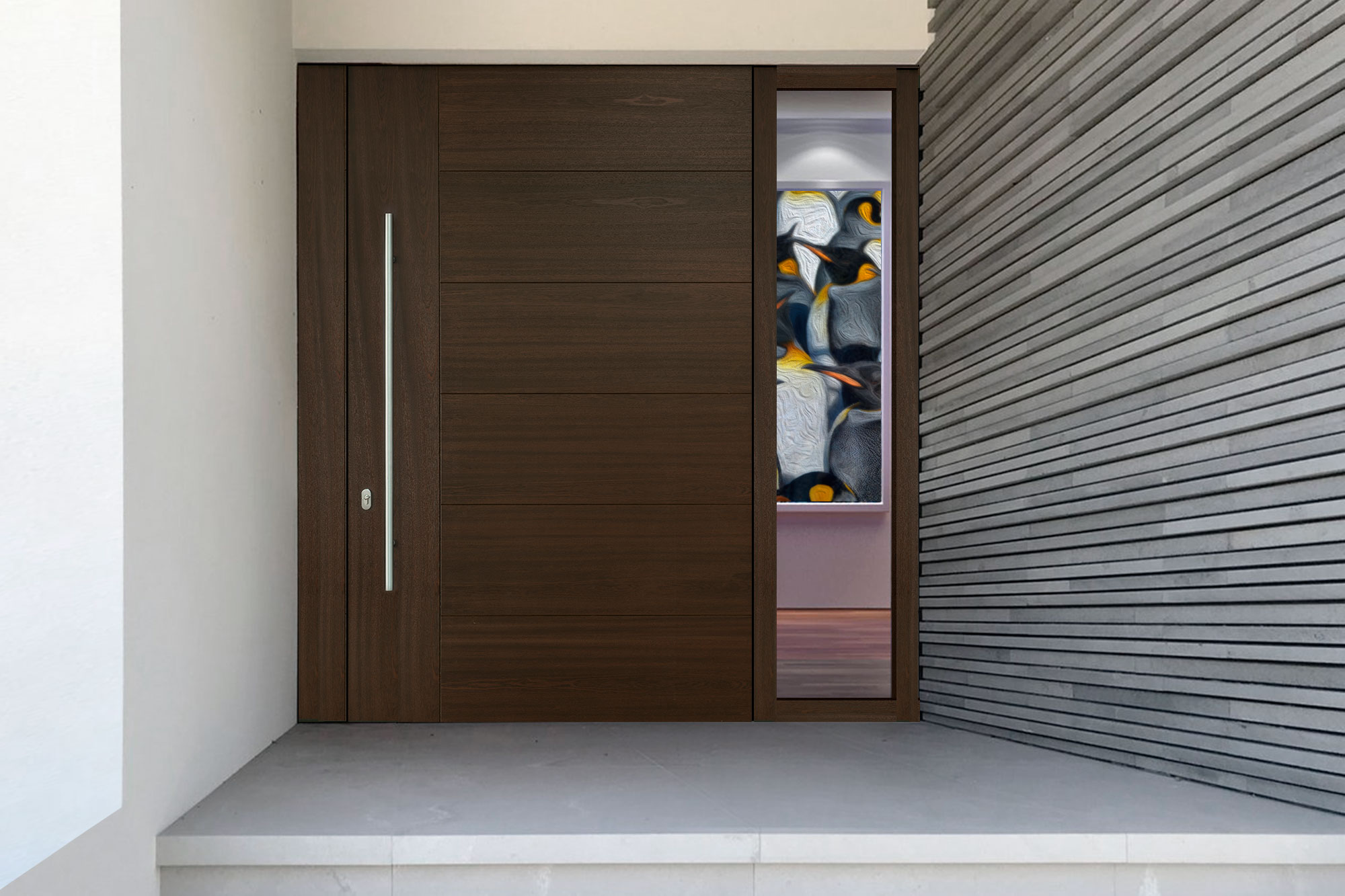
Key Factors to Consider When Choosing Wood for Your Front Door
When choosing wood for your front door, it’s important to look beyond just the door’s look. There are several key factors to keep in mind to ensure that your door will not only enhance the beauty of your home but also stand the test of time. These factors include durability, aesthetic appeal, and maintenance needs. Let’s take a closer look at these crucial considerations.
Durability and Weather Resistance
Your front door faces the elements every day, so choosing a wood that can withstand the wear and tear of weather is important. Durability is one of the most critical factors when choosing wood for a front door. The right type of wood can handle rain, snow, sun, and fluctuating temperatures without showing signs of damage.
Hardwoods like oak, mahogany, and teak are well-known for their ability to resist moisture and rot. These types of wood are less likely to warp or crack under extreme weather conditions. On the other hand, softer woods like pine or fir may be more affordable but tend to be less resistant to harsh weather, meaning they could require more frequent maintenance.
Weather resistance also plays a significant role in the overall lifespan of your front door. A door that can resist moisture and extreme temperature changes will last longer and require fewer repairs. So, if you live in an area with a lot of rain or snow, consider investing in a durable hardwood for your front door.
Aesthetic Appeal and Design Flexibility
One of the reasons homeowners love wood for their front doors is the versatility it offers in terms of design. Wood can be stained, painted, or left in its natural state, allowing you to match the door with the overall style of your home. Wood can easily adapt to suit your design preferences, whether you prefer a rustic, modern, or traditional look.
With wood, the possibilities for customization are endless. You can choose from different wood grains, textures, and finishes to create a door that complements the architecture of your home. For example, a sleek mahogany front door will add an elegant, timeless touch to a modern home, while a rustic oak door will bring warmth and charm to a country-style house.
Wood also allows you to add intricate carvings or glass inserts, giving you more control over the design. This flexibility makes wood an ideal choice for your front door to reflect your style and taste.
Maintenance and Care Requirements
While wood is a beautiful and durable material, it requires maintenance to keep it looking its best. One of the most important things to consider when choosing wood for your front door is how much care and attention it will need over time.
Wooden front doors must be regularly sealed to protect them from moisture and UV rays. Wood can begin to warp, crack, or discolor if left untreated. Sealing and staining the door every couple of years can help preserve its beauty and prevent damage from the elements.
Different types of wood have varying maintenance needs. For example, hardwoods like oak and mahogany require less frequent maintenance than softer woods like pine. However, no matter the type of wood, regular cleaning is essential. You can easily clean your wood front door with mild soap and water, and avoid using harsh chemicals that may damage the finish.
Another maintenance consideration is preventing pests like termites from causing damage. Some woods, like cedar, have natural insect-repellent properties, while others may require additional treatment to protect against pests. Be sure to check your door periodically for signs of damage and take steps to protect it from the elements.
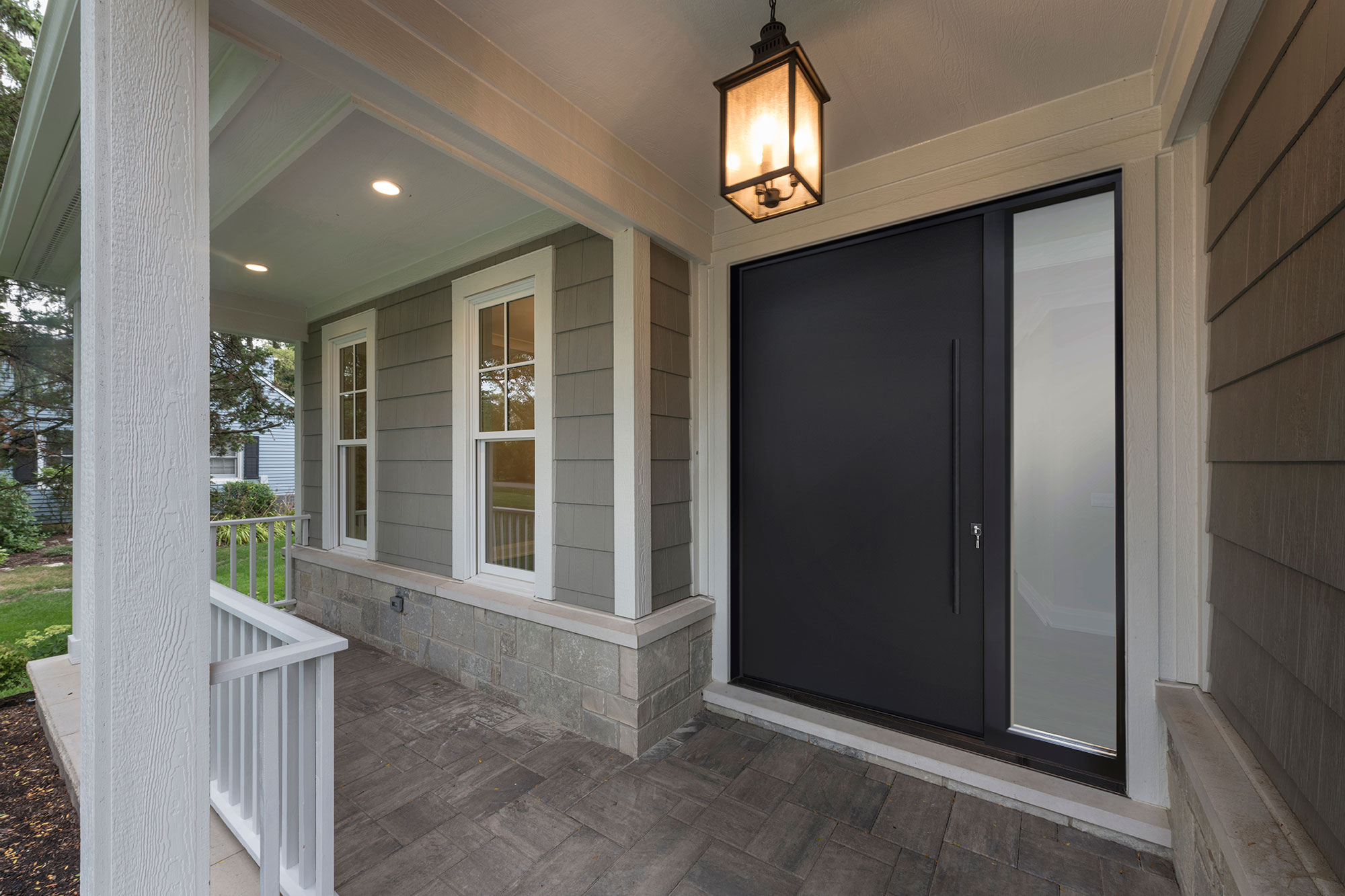
Popular Types of Wood for Front Doors
When choosing the best wood for your front door, the variety of options available can be overwhelming. Each type of wood offers unique characteristics, from durability to aesthetics. In this section, we’ll break down some of the most popular wood choices for front doors, highlighting their benefits and how they can complement different home styles.
Oak – A Classic, Sturdy Choice
Oak has long been a top choice for front doors due to its strength and timeless appeal. Known for its robustness, oak is an excellent option for a door that withstands years of use and weather exposure. Its dense grain makes it resistant to dents and scratches, ensuring your front door maintains its shape and beauty for a long time.
The natural color of oak ranges from light tan to medium brown, with a golden hue that adds warmth to any entryway. Whether you choose red or white oak, this wood can be stained or finished in various ways to match your home’s exterior. Oak is particularly well-suited for traditional or farmhouse-style homes, offering a classic, rustic charm that never goes out of style.
Mahogany – Elegant and Luxurious
If you want to add a touch of sophistication and elegance to your front door, mahogany is an excellent choice. This rich, reddish-brown wood is known for its smooth texture and luxurious appearance. Mahogany is often associated with high-end craftsmanship, making it a popular choice for homeowners who want to make a bold statement with their front door.
Not only does mahogany look stunning, but it’s also highly durable and weather-resistant. It’s less likely to warp or swell in humidity than other woods, making it perfect for climates with high moisture levels. Mahogany’s deep, reddish tones add warmth and character to your front entry, and it can be easily paired with intricate carvings or glass inserts for a more personalized touch.
Cherry – Warmth and Richness
Cherry wood is a popular option for front doors that need to create a welcoming, warm atmosphere. Known for its rich reddish-brown color, cherry wood darkens and deepens in hue over time, developing a beautiful patina that only improves with age. This wood is perfect for homeowners who want a door that exudes warmth and elegance.
While cherry is a softer wood than oak or mahogany, it’s still durable enough for use in exterior doors when properly maintained. It’s an ideal choice for homes with traditional or colonial designs, as it complements their classic style. The fine grain of cherry wood gives it a smooth, polished look that complements any home’s entryway.
Maple – A Smooth and Modern Option
Maple is a popular choice for those looking for a smooth, clean finish for their front door. Its pale color and fine grain make it a versatile option that fits modern and contemporary designs well. Maple’s light, neutral tones allow it to blend seamlessly with various home exteriors, from sleek, minimalist homes to more eclectic, modern spaces.
Although maple is a relatively hard wood, it’s not as dense as oak or mahogany, meaning it’s easier to work with during installation. This makes it a great option if you want a front door that’s both stylish and functional. Maple’s simple, understated beauty makes it ideal for homeowners who appreciate a more minimalist aesthetic, while still enjoying the benefits of a durable, long-lasting material.
Pine – Budget-Friendly and Attractive
Pine is an excellent option if you’re on a budget but still want a beautiful and functional wooden front door. It is one of the most affordable woods on the market, yet it still offers a warm, inviting look that enhances your home’s curb appeal. The wood’s pale color and straight grain give it a light, airy appearance that works well with contemporary and rustic styles.
Although pine is softer than hardwoods like oak or mahogany, it can still hold up well if properly treated. It’s best suited for milder climates, but pine can withstand various weather conditions with the right finish. Pine’s affordability makes it an attractive choice for homeowners who want a high-quality wooden front door without breaking the bank.
Fir – Affordable and Durable
Fir is another cost-effective option for front doors that offers both durability and beauty. With its straight, uniform grain and light color, fir wood provides a clean and simple aesthetic that complements many home exteriors. It’s also a highly durable wood that is resistant to cracking and warping, which makes it an excellent choice for exterior use.
Fir is often used for modern and traditional home designs because of its versatility. It’s easy to work with, allowing for customization through staining or painting, and can be designed to suit a range of architectural styles. Fir offers a great balance of affordability, strength, and beauty, making it a solid choice for homeowners looking to invest in a wooden front door without spending too much.

Understanding Wood Grades and Quality for Front Door
When selecting the perfect wood for your front door, understanding the quality and grading of wood is essential. The wood grade determines how long your front door will last, how it will look over time, and how well it will perform against the elements. In this section, we’ll explore solid wood doors, compare veneer to solid wood, and provide tips on how to check for wood quality to ensure you’re making the best investment.
What is a Solid Wood Door?
A solid wood door is made entirely from wood, without any fillers or synthetic materials. This means the door is made from a single, continuous piece or several layers of solid wood that are bonded together. Solid wood doors are known for their strength, durability, and natural beauty. The grain patterns of the wood are visible, adding character and warmth to your home’s entrance.
Solid wood provides excellent insulation for front doors, keeping your home warm in winter and cool in summer. Solid wood doors are also more secure than hollow or composite doors because they are denser and harder to break. While solid wood doors are generally more expensive than alternatives like veneer or hollow core doors, they offer a level of quality and craftsmanship that can significantly enhance your home’s curb appeal and longevity.
Veneer vs. Solid Wood: Which is Better?
When shopping for a front door, you may come across two main wood options: veneer and solid wood. But what’s the difference, and which is the better choice for your front door?
Solid Wood:
As mentioned earlier, solid wood doors are made entirely of wood and provide superior durability, insulation, and security. These doors are more expensive because they are made from higher-quality materials. Solid wood doors also have a natural, rich appearance that can’t be easily replicated. However, they require regular maintenance, including sealing and staining, to keep them looking their best.
Veneer:
Veneer doors are made by bonding a thin layer of high-quality wood (the veneer) over a less expensive core material, such as plywood or MDF (medium-density fiberboard). The veneer makes the door look like solid wood, but it’s not as durable or sturdy. While veneer doors are more affordable than solid wood doors, they don’t provide the same level of insulation or security. However, veneer doors can still be a great option if you’re on a budget and looking for a beautiful door that looks like solid wood without the high price tag.
Summary
A solid wood door is the way to go if you want a high-end, long-lasting front door with excellent insulation and security. However, a veneer door can be a great alternative if you’re looking for a more budget-friendly option that still looks attractive.
How to Check for Wood Quality?
When shopping for a wooden front door, checking the wood quality is crucial to ensure you get a door that will stand the test of time. Here are a few tips on how to check the quality of the wood used in your front door:
Look for the Grain Pattern:
High-quality wood typically has a tight, uniform grain. If you see large gaps or irregularities in the grain, this could indicate that the wood is of lower quality. For front doors, look for a wood type with consistent grain patterns, like oak or mahogany, to ensure a sturdy, long-lasting door.
Check the Wood’s Density:
The density of the wood affects its strength and durability. Denser woods like oak and mahogany are heavier and more durable, while lighter woods like pine may not be as sturdy. A denser wood will hold up better to the elements and wear over time, making it a better choice for a front door.
Look for Certifications:
Many high-quality woods are certified by organizations like the Forest Stewardship Council (FSC). This certification ensures that the wood comes from a sustainable source and is harvested responsibly. If environmental sustainability is important to you, look for wood that has been FSC-certified.
Ask About the Wood’s Origin:
Where the wood comes from can tell you much about its quality. Certain types of wood, like oak, mahogany, and teak, are sourced from specific regions known for producing high-quality wood. Ask your supplier about the origin of the wood and whether it meets industry standards for quality and sustainability.
Summary
By considering these factors, you can ensure that you’re choosing a front door made from high-quality wood that will last for years and add beauty to your home’s entrance.
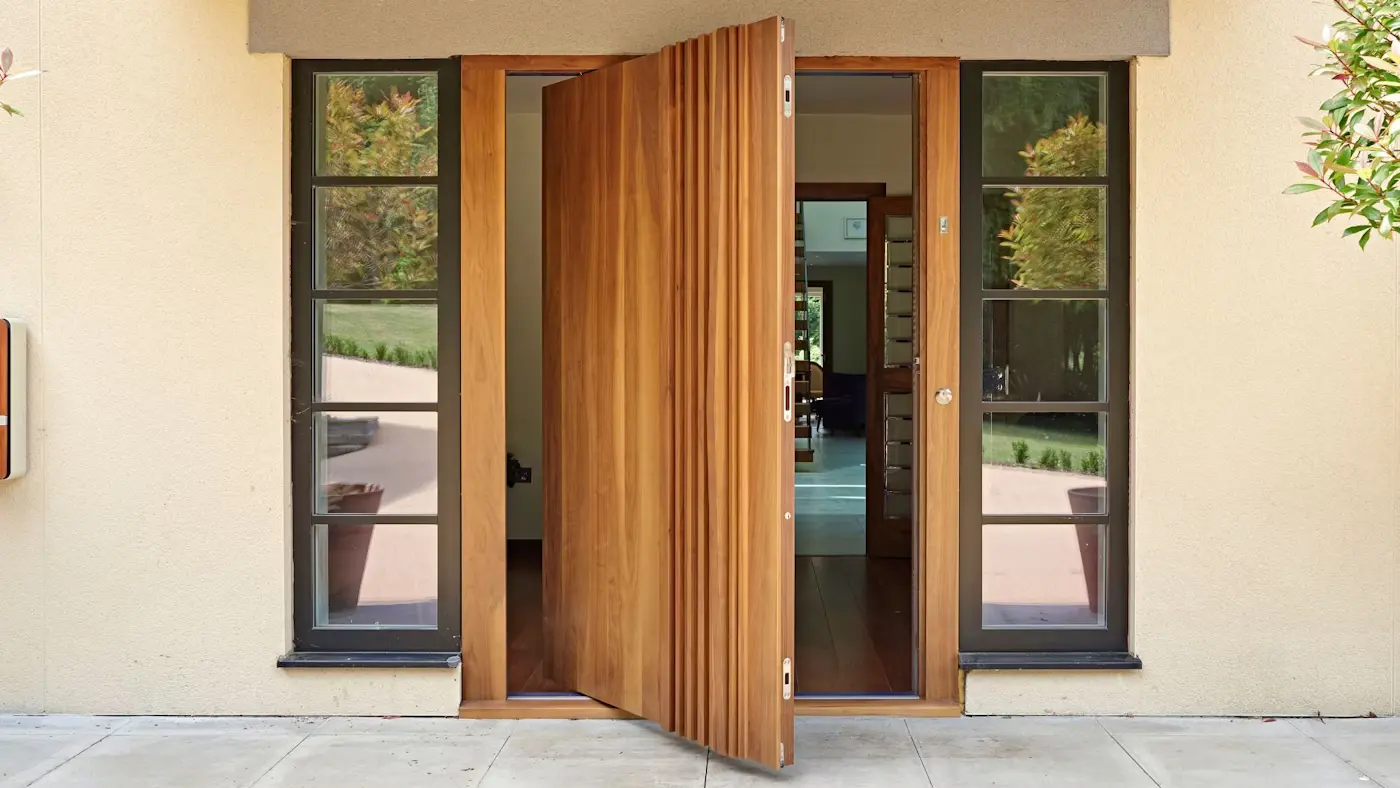
Environmental Impact and Sustainability of Wood Choices
As more homeowners become eco-conscious, choosing sustainable materials for their front doors has become a priority. The environmental impact of wood sourcing, deforestation, and the carbon footprint of manufacturing can no longer be overlooked.
Sustainable Wood Options for Eco-Conscious Homeowners
If you’re an eco-conscious homeowner looking to reduce your environmental impact, choosing sustainable wood for your front door is an important step. Several wood species are considered more sustainable due to responsible forestry practices and their fast-growing nature. Some popular options include:
Bamboo:
While technically a grass, bamboo is one of the most sustainable materials. It grows quickly, doesn’t require pesticides, and can be harvested without damaging the environment. Bamboo is durable and stylish, offering a unique look for modern or eco-friendly homes.
Cedar:
Known for its natural resistance to insects and rot, cedar is a durable option for front doors. It’s often sourced from sustainably managed forests, making it an environmentally friendly choice. Cedar also has a pleasant aroma and a distinctive reddish-brown color, adding warmth to your entryway.
Reclaimed Wood:
Reclaimed wood, sourced from old barns, factories, and other buildings, is an eco-friendly choice that reduces the need for new trees to be cut down. It adds a rustic, timeless charm to your front door and promotes sustainability.
Teak:
Teak is a highly durable hardwood often harvested from responsibly managed forests. It’s resistant to rot and insects, making it an excellent option for front doors in areas with high humidity. Just look for sustainably sourced teak to ensure that it’s harvested responsibly.
Summary
By choosing these sustainable options, you reduce your environmental impact and give your front door a unique look that’s both beautiful and eco-friendly.
How to Choose a Wood from Certified Sources?
One of the best ways to ensure that the wood used in your front door is sustainably sourced is to choose wood from certified sources. Certification programs exist to promote responsible forestry and ensure that wood products are harvested in ways that protect the environment and support fair labor practices. Here are some tips on how to select certified wood for your front door:
Look for FSC Certification:
The Forest Stewardship Council (FSC) is a global leader in certifying wood products from sustainably managed forests. When you see the FSC logo on a wood product, it means the wood has been sourced from a responsibly managed forest, ensuring that it meets environmental, social, and economic standards.
Check for PEFC Certification:
The Programme for the Endorsement of Forest Certification (PEFC) is another widely recognized certification for sustainable forestry. It ensures that the wood used in your front door comes from forests managed carefully, protecting biodiversity and wildlife habitats.
Ask About Chain-of-Custody Certification:
The chain of custody certification guarantees that the wood has been tracked throughout the supply chain—from the forest to the final product. This certification helps ensure that the wood has been ethically sourced and that no illegal or harmful practices were used in its procurement.
Summary
By choosing wood from certified sources, you can feel confident that your front door is beautiful and responsibly sourced. It’s a great way to contribute to global sustainability efforts and positively impact the environment.
The Benefits of Using Reclaimed Wood
Reclaimed wood is a unique and environmentally friendly option for front doors. This wood is salvaged from old buildings, barns, warehouses, and other structures that would otherwise be demolished or discarded. By repurposing this wood, you’re giving it a second life and preventing it from ending up in a landfill. Here are some of the key benefits of using reclaimed wood for your front door:
Eco-Friendly:
Reclaimed wood reduces the need for new timber to be harvested, preserving natural forests and their ecosystems. It also lowers the demand for energy-intensive manufacturing processes that come with producing new wood products.
Unique Aesthetic:
One of the standout features of reclaimed wood is its character. It often has a weathered, rustic appearance that can’t be replicated with new wood. Reclaimed wood for your front door can add a sense of history and uniqueness to your home, making it a conversation piece for guests.
Durability:
Since reclaimed wood comes from structures that have stood the test of time, it’s often more durable than newer wood. It has already been exposed to the elements, making it naturally resistant to wear and tear. A reclaimed wood front door can last many years with the right care.
Supports Sustainability:
By using reclaimed wood, you’re supporting the sustainable practice of reusing materials. It helps reduce waste and minimizes the environmental impact of construction and demolition. Reclaimed wood doors are a fantastic choice for homeowners who want to embrace sustainability without sacrificing style.

How to Maintain and Protect Your Wooden Front Door?
A wooden front door adds natural beauty and elegance to your home, but requires regular care to maintain its charm and functionality. Withstanding harsh weather conditions or keeping its appearance fresh, the right maintenance will help prolong its life and keep your door looking great for years.
Sealing and Finishing Your Wooden Door
Sealing and finishing your wooden front door is one of the most important maintenance tasks to ensure longevity. A well-applied finish enhances the wood’s natural beauty and provides a protective layer that keeps moisture and dirt out. Here’s how to properly seal and finish your door:
1. Choose the Right Finish:
There are several types of finishes, including varnish, polyurethane, and oil-based finishes. For a front door, selecting a finish that provides both durability and UV protection is best. Look for finishes specifically designed for exterior use to ensure they hold up against sun exposure and weather.
2. Apply a Sealer:
Before finishing, you should apply a wood sealer. This helps create a barrier that prevents moisture from seeping into the wood, leading to swelling, warping, or rot. Make sure to apply the sealer evenly, covering all surfaces of your front door, including edges and joints.
3. Regular Touch-Ups:
Over time, the finish may wear off due to exposure to the elements. To keep your front door looking fresh, perform regular touch-ups. Apply a fresh finish coat every 1-2 years, or sooner if you notice signs of wear, such as dullness or fading.
Summary
Proper sealing and finishing are key to maintaining a wooden front door’s appearance and performance. A good finish will make the door easier to clean and prevent damage from rain, snow, and UV rays.
Preventing Warping and Rotting
Wooden front doors are susceptible to damage from moisture, which can cause warping, swelling, and rot. To keep your door in excellent condition, it’s essential to prevent these issues. Here are some practical tips:
1. Ensure Proper Installation:
When installing your wooden front door, ensure it’s aligned and sealed around the edges. A door that doesn’t close properly or has gaps can allow water to seep in, which increases the risk of warping and rot. Weatherstripping can help seal the gaps and protect against moisture.
2. Regular Cleaning:
Dirt and debris can trap moisture on the surface of your door. Clean your wooden front door regularly with a mild soap solution and a soft cloth to remove dirt, dust, and grime. This will prevent any buildup contributing to water retention and wood damage.
3. Apply a Water-Repellent Treatment:
Consider applying a water-repellent treatment designed for exterior wood. These treatments penetrate the wood and provide a layer of protection against moisture. Some products even offer mildew and mold resistance, which is helpful in areas with high humidity or frequent rainfall.
4. Keep the Door Elevated:
If your front door is installed near the ground, ensure proper drainage around it. A door that sits too low or has poor drainage may collect water at the bottom, leading to swelling or rotting. Ensure the door’s bottom edge is raised slightly off the ground to prevent moisture from accumulating.
5. Inspect for Signs of Damage:
Regularly inspect your wooden front door for signs of water damage, such as discoloration or soft spots. If you notice any, immediately re-seal the door or apply a new finish coat. The sooner you address these issues, the less likely they will cause permanent damage.
Summary
Preventing warping and rotting involves a combination of proper installation, regular cleaning, and using protective treatments. You can keep your front door in top condition by staying on top of these tasks for many years.
Seasonal Care Tips for Wooden Doors
Your wooden front door faces different challenges as the seasons change. Extreme heat, cold, rain, and snow can all affect the condition of your door. Here’s how to care for your wooden front door throughout the year:
1. Spring and Summer:
During warmer months, the sun’s UV rays can cause the wood to fade and dry out. To protect your door, apply a fresh coat of UV-resistant finish in the spring or early summer. This will help prevent sun damage and maintain the door’s vibrant color. Additionally, check for any cracks or gaps that may have developed during the winter and seal them.
2. Fall:
Fall brings cooler temperatures and increased humidity, which can cause the wood to absorb moisture and expand. To prevent this, ensure your door is properly sealed and no gaps around the edges. This is also a great time to inspect the weatherstripping and replace it if needed. Clean the door to remove leaves and other debris that can trap moisture.
3. Winter:
Cold weather and snow can cause wood to shrink and contract. During winter, check for any drafts around your front door and replace weatherstripping if necessary. Ensure that the bottom of the door is free from snow and ice buildup, which can cause swelling or damage over time. You may also want to apply a protective layer of wax to the door’s surface to keep moisture out.
4. Regular Lubrication:
No matter the season, lubricate your front door’s hinges and locks at least once a year. This keeps them functioning smoothly and prevents rust or corrosion, especially in colder months when metal parts are more prone to freezing or jamming.
Summary
By performing seasonal maintenance, you can ensure that your front door continues to withstand changing weather conditions. Regular care will protect your door from temperature fluctuations, moisture, and the wear and tear of daily use.
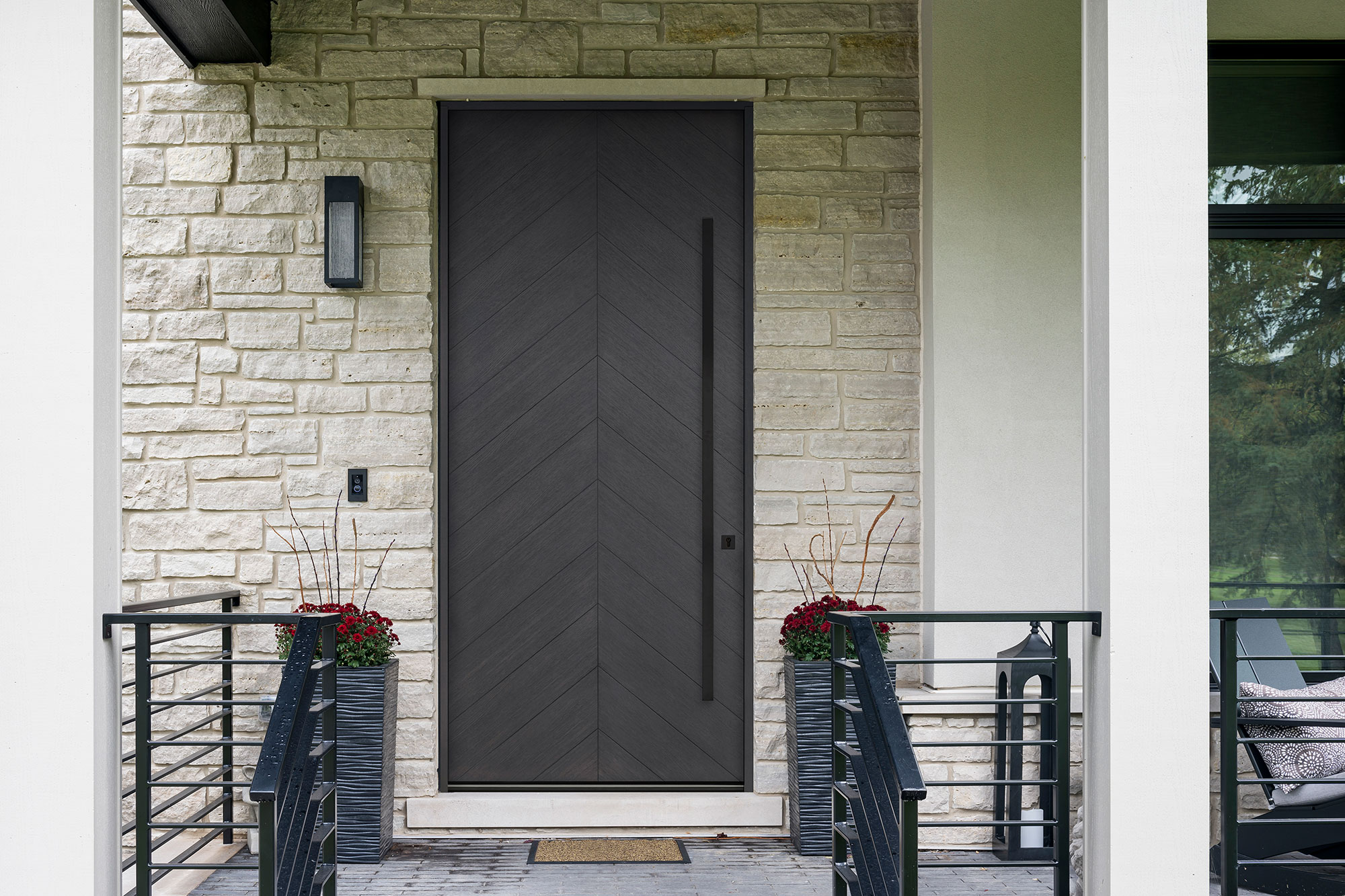
Conclusion
Choosing the right wood for your front door is a decision that impacts both the look and the functionality of your home. Whether you’re looking for something classic, modern, or eco-friendly, understanding the different wood types, their durability, and maintenance needs will help you make the best choice.
Choosing the Right Wood for Your House Front Door
When selecting the right wood for your front door, it’s important to consider both aesthetic preferences and practicality. Each type of wood brings a unique look to your home’s exterior, from the timeless beauty of oak and mahogany to the rustic charm of pine or reclaimed wood. Oak is perfect for a sturdy, classic door, while mahogany gives a luxurious, sophisticated touch. If you want a more modern, minimalist look, maple or teak might be ideal.
In addition to aesthetics, it’s important to think about your local climate. For example, if you live in an area with high humidity or extreme temperatures, you’ll want a durable wood like oak, teak, or mahogany that can withstand the elements. On the other hand, if you’re working with a tighter budget, options like pine or fir offer great value without sacrificing too much on style or strength. Ultimately, the wood you choose should match your home’s style and provide the level of performance needed to protect against the weather.
Regarding Durability, Aesthetics, and Maintenance
Regarding your front door, three main factors are crucial in making the best decision: durability, aesthetics, and maintenance.
Durability:
The durability of your front door depends mainly on the wood type and the care you give it. Hardwoods like oak, mahogany, and teak are naturally resistant to wear, moisture, and rot, making them ideal for exterior use. They require less maintenance and can handle the changing seasons without compromising strength. Softer woods, like pine or fir, may be more affordable but require more frequent care and may not last as long in harsh weather.
Aesthetics:
Your front door should reflect your personal style and the overall look of your home. Wood offers a wide range of textures, colors, and grains that can complement different architectural styles. From sleek modern designs to rustic farmhouse looks, wood is versatile enough to fit any aesthetic. Whether you choose a natural finish to highlight the wood’s grain or a painted finish to match your home’s color palette, wood allows you to create the look you want.
Maintenance:
Maintaining your wooden front door is essential for preserving its beauty and functionality. All wood doors need some level of upkeep, whether resealing, refinishing, or cleaning. Hardwoods tend to require less maintenance than softwoods, but both types of wood benefit from regular care. Sealing and finishing your door every year or two will protect it from the elements and prevent warping and rotting. Be sure to check your door for signs of wear and address them early to extend the door’s lifespan.
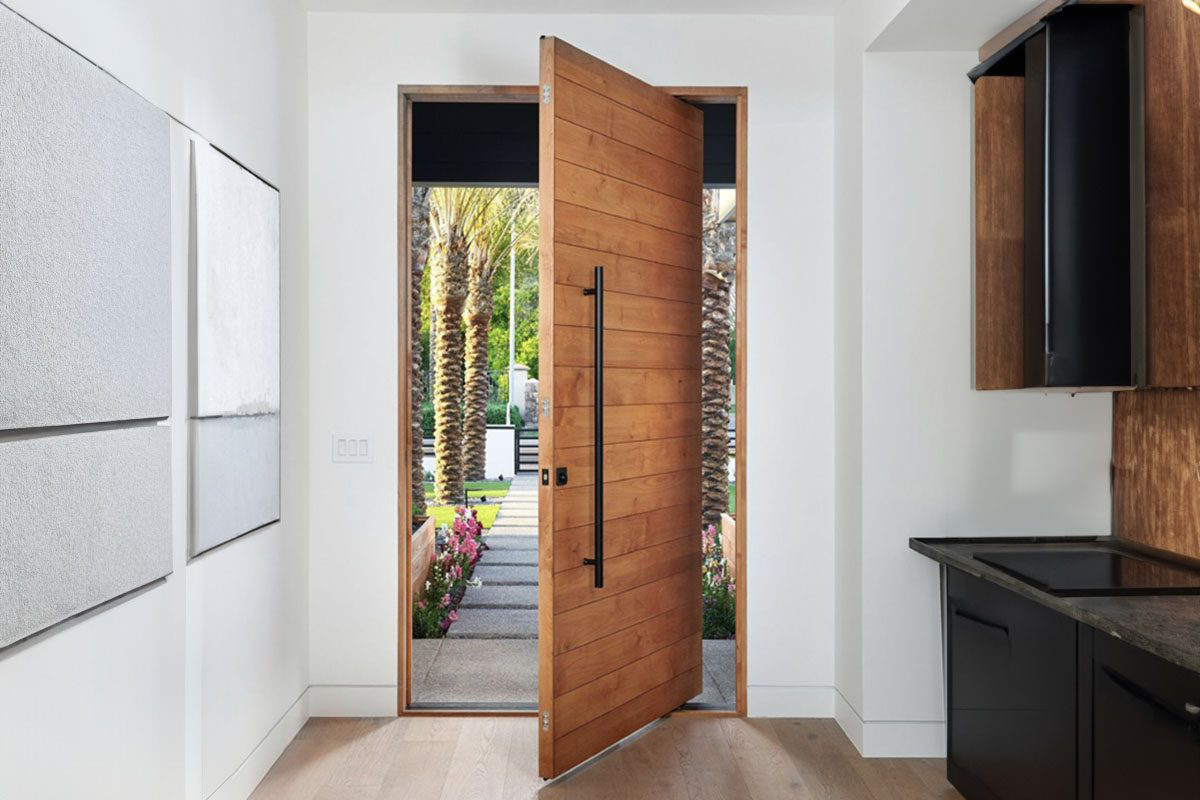
Relate FAQ
What is the most durable wood for a front door?
Mahogany and oak are the top choices for the highest durability. Both woods are dense, resilient, and resistant to moisture, making them ideal for front doors exposed to the elements.
How long does a wooden front door last?
The lifespan of a wooden front door depends on the type of wood and how well it’s maintained. Generally, a well-maintained wooden door can last 20 to 30 years. Regular sealing and finishing can help extend its life.
Is a solid wood door better than a hollow core door?
A solid wood door is generally considered better for front doors because it offers superior insulation, security, and longevity. A hollow core door may be less expensive but lacks the strength and durability needed for an exterior door.
Can a wooden front door withstand extreme weather?
Wooden doors, especially those made of dense hardwoods like Mahogany or Oak, can withstand extreme weather if properly treated and maintained. Regular sealing, staining, or painting is essential to protect against moisture, UV rays, and temperature fluctuations.
What’s the best wood finish for a front door?
Oil-based finishes or marine varnishes are recommended for a durable finish for wooden front doors. These finishes protect the wood from moisture and UV damage while enhancing the natural grain.


